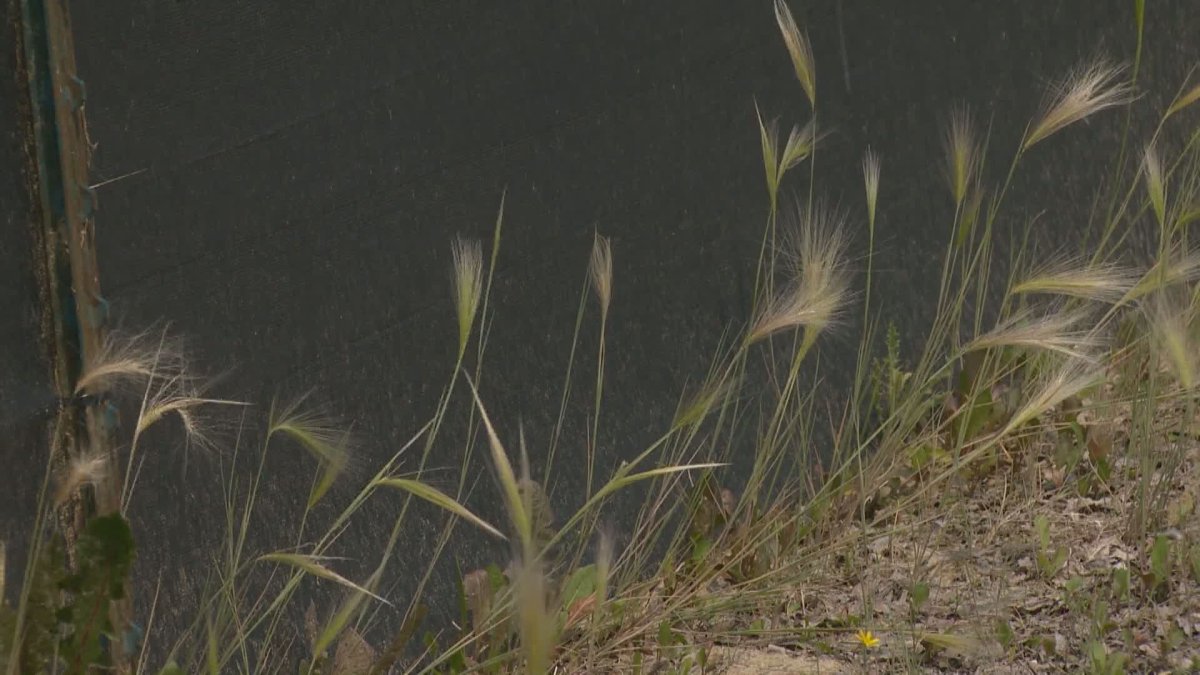The City of Saskatoon is warning residents to be careful when walking their pets, telling them to be wary of dangerous foxtail grass.

The spiky barbs of the grass can become lodged in the skin, nose, mouth and eyes of animals.
“It is a common problem with dogs just because of what dogs do,” explained veterinarian Cathy Dick at the University of Saskatchewan. “They love to sniff around things, run through the bushes, grab all of the things and chew things.”
The City of Saskatoon said the grass has spread across Saskatoon in parks and open city spaces.
If ingested, the barbed seed heads can embed in soft tissues and lead to infections, especially in dogs and horses.
“If you are a dog and sniff foxtails up your nose, that will present differently than if you were running around and stepped on a bunch and the little barbs got into your feet,” Dick said. “Foxtails can present in many different ways.”
Dick explained the barbs on foxtails to be like an arrow.
“When it enters the skin, it doesn’t come back out of the skin. Its direction is to move forward. As it moves forward it is going to be burrowing through skin and tissue.”
She said a dog that has a barb stuck in its throat might show symptoms of coughing, heavy breathing and a spiked fever.
She also noted the barbs will not show up on an X-ray.
Brushing your dog after a walk, keeping them on a leash and checking their ears and paws daily can help prevent foxtail infections.
“The other thing about foxtails is that often, you will not see the results right away,” Dick said. “It’s not like you will go home from the walk and they are not well. If you notice that a dog is licking at a certain area or that area starts to get red or swollen, you should start looking into veterinary attention.”
She said the effects can take days or weeks to be noticeable.
The city said foxtail can be controlled by mowing in late May and early June, tilling the root systems, and applying selective herbicides in late October.
“Be aware of where you take your dog. Be aware of the danger. Pay attention to what they are doing,” Dick advised.





Comments